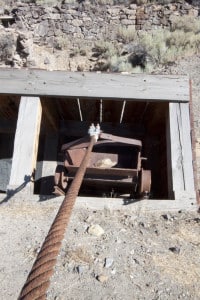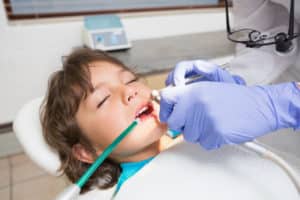How Do Dentists Keep Mercury Out of Our Water Supply?
How do Dentists keep Mercury out of our water supply?
This is the third article in a series about dental amalgams. Read about the History of Dental Amalgams. The second in the series is Proper Use and Safety of Amalgams.
How do Dentists keep Mercury out of our water supply? What about other metals? What do environmentally responsible dentists do to protect our precious supply of water?
Protecting patients, the public and the environment is always on the mind of responsible, caring dentists. We are tasked with the disposal of amalgam material which is used judiciously in pediatric dental practice.
Parents often ask what we do with the mercury in dental amalgams, and how the environment is being considered in the process. Not only are you concerned about mercury and other metals in amalgam fillings, it’s understandable that you want assurance these substances aren’t entering our water supply.
Here are a few facts:
- The amount of mercury discharged into the environment each year from amalgams by dentists is less than 2% of the total amount of mercury entering our environment
- At least 50% of the mercury in our environment comes from natural sources
- In Nevada County, Miners used mercury to recover gold in both placer and hard rock mining operations, much of which made its way into soil and streams. Here’s a link to a USGS article which addresses the issue in the Foothills
- According to the Environmental Protection Agency, industrial burning accounts for the largest human-caused source of mercury emissions in the United States

• In Nevada County, Miners used mercury to recover gold in both placer and hard rock mining operations, much of which made its way into soil and streams.
How Much Mercury Is Used in Dental Amalgam?
According to the American Academy of Pediatric Dentists, dental amalgams contain approximately 50% Mercury. The other metals are silver, copper and tin. As we discussed in our May article, amalgams are still the best choice in a variety of situations. There has not yet been another material made which lasts as long as amalgams, nor one which can be used to fill large areas reliably.
What Happens to Dental Amalgam Particulates In The Dentist’s Office?
In our office, all fluids from suction, spittoons, vacuums, etc. travel through a system that is designed to catch the particulates. At the end of that system, the waste water goes through a separator, which isolates the particulates for proper disposal. The system is regularly maintained and cleaned with non-caustic cleaners designed specifically for this purpose.
“In 2002, an ADA-sponsored environmental assessment found 78 percent of amalgam waste could be captured through dental office adherence to then-current best management practices associated with handling amalgam.”
How is Amalgam Waste Handled by Public Water Agencies?
After the separators remove 78% of the amalgams, the remaining water is then released to the city sewer system via drains located in the dental office. Public Water Treatment Stations are able to remove approximately 90% of the remaining amalgams from this wastewater. The waste settles out as a component of the sludge that is disposed of by the treatment plant.
The Environmentally Responsible Dentist
The California Dental Association has developed ‘Best Practices’ for dentists to use when handling and disposing of amalgam waste. Some of these include:
- Use pre-capsulated alloys and stock a variety of sizes. These are ‘pre-measured’ amounts of dental amalgam which allows us to mix only what is needed for a specific filling with minimal to no waste
- Recycle disposable amalgam capsules
- Salvage amalgam pieces from restorations and recycle
- Separate excess amalgams from gauze used during placement and place in appropriate containers
- Recycle amalgams captured with chair side filters, amalgam separators, and vacuum pump filters
- Recycle extracted teeth that contain amalgam restorations
- Use line cleaners that are specifically designed for the purpose of cleaning the water lines without being caustic
- Provide ongoing training for staff so they stay up-to-date on safety and procedures

What is the Environmental Protection Agency doing to ensure safety?
The EPA currently has rules and guidelines for the disposal of amalgams containing mercury. In addition, they have proposed new guidelines and standards under the Clean Water Act which would require dentists to use the best available technology to control mercury discharges to public water treatment facilities.
California has one of the most rigorous sets of environmental rules and guidelines anywhere in the world
What are we doing?
Responsible dental practices are already following the proposed guidelines and, like Caring Tree Children’s Dentistry, have been doing so for a long time. As a Pediatric Dental practice, we play an especially important role in protecting our children and our environment for future generations.
We love concerned parents! If you have any questions about the use of dental amalgams for your child, or the methods we use to dispose of the amalgam waste, please ask. It’s our goal that you are assured we will put your child’s safety first.













